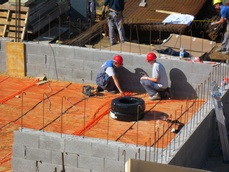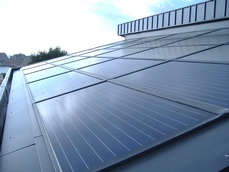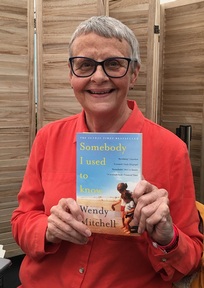Looking to renewable energy to future proof care homes

Earlier this year the Carbon Trust published a report warning businesses to prioritise their resource efficiency and embrace renewable energy or ‘risk being left behind’ in the future proofing of their company.
Highlighting that some critical fossil fuels could be in short supply by as soon as 2016, the Carbon Trust said making changes soon to improve efficiency is not only critical to address resource shortages, but makes a valid argument for investment.
Leaders from the renewable energy sector have championed care homes as ideal candidates to benefit from sustainable technology and said care homes can even make long term financial savings by introducing a range of sustainable measures.
Why care homes?
Care homes have been described as strong candidates to benefit from energy saving products due to their consistent energy requirements. Energy is being used 24 hours a day to heat, light and operate care homes creating the consistent levels of energy usage compatible to the way sustainable technologies run successfully.
Architect Roy Langstaff explained why care homes are ideal places for the introduction of sustainable technologies. Mr Langstaff, who has a background in low carbon architect in the care sector, said: “Care homes have high energy demands for relatively high internal temperatures, often at 24-26 deg. c. to suit their residents’ requirements.
“They have an ideal balance of energy and load profile demands that works well for sustainable technologies as their requirements need high amounts of electric, hot water, heating, potentially cooling and so on. Whereas many other sectors have a very high demand in one specific requirement but not the others, this sits very well with a mix of varying sustainable technologies that allows any care development to exploit the best of each technology to suit its specific requirements.”
Project coordinator for renewable energy provider Saving Energy UK , Kris Laver, encourages care homes to embrace sustainable energy advancements as a positive way to tackle the increasing cost of energy prices, and improve overall energy efficiency. 
Describing the use of fossil fuels being used by the majority of care homes, Mr Laver said: “As winters get colder and energy prices continue to inflate it will become increasingly difficult as a model to continue.
“In a care home scenario the level of energy demand is higher than average due to the 24 hour nature of the care. The need for heating and electricity on demand is paramount in order for the care to be delivered effectively and for the residents and their families to receive the level of care or service that they expect.”
Non-domestic Renewable Heat Incentive (RHI)
In April the Government launched a new initiative to encourage the use of renewable heating for both domestic and non-domestic consumers.
Under the Renewable Heating Incentive, organisations including care homes are paid for every unit (kWh) of useful heat produced through renewable technologies. The incentive rewards companies which reduce dependence on non-renewable fossil fuels.
Methods of renewable heating covered by the scheme include solar thermal collectors, wood fuel heating through biomass, heat pumps, geothermal, solar thermal collectors, biomethane and biogas.
At the launch of the most recent improvements to the RHI, the Renewable Energy Association chief executive Dr Nina Skorupska said: “The RHI is now a truly world-leading renewable energy policy. Almost all renewable heat applications are now supported under the scheme, offering businesses greater choice than ever before on how to sustainably meet their heating needs.”
The scheme even makes it possible for care homes to make money by achieving negative operating costs. Director of New Energy Management, suppliers of building related sustainable technology, Jim Gott explained: “It is possible to build care homes, where the heating, cooling and hot water costs are negative, indeed care homes are the ideal market for achieving negative operating costs.
“This sounds a little crazy, but there are significant government incentives available that are paid on a per kWh basis and care homes are big energy uses and as such attract a lot of incentive.”
Savings of £100,000
The practical impact of the RHI has been showcased by one care home in Woodbury, near Exeter, which in one year has saved £6,000 in energy bills and is on track to save a further £100,000 over the next twenty years.
 Stallcombe House, a residential care home for adults with learning disabilities, has achieved these savings by replacing its oil and electric storage heaters with a biomass wood chip boiler system.
Stallcombe House, a residential care home for adults with learning disabilities, has achieved these savings by replacing its oil and electric storage heaters with a biomass wood chip boiler system.
Working like a conventional boiler, the 130kW system saves CO2 emissions burning wood pellets as opposed to gas or oil.
The system was designed and installed over a three month period by Fair Energy, an Exeter based company providing renewable heating systems to commercial and residential properties.
Mr Thistle said: “The installation has delivered countless benefits for both the residents and our organisation as a whole over the past year.
“We believe we are one of very few residential care organisations to make a biomass installation of this kind and we are proud to further our credentials as an environmentally friendly organisation.”
Manager of the home Chris Thistle has encouraged more care homes to look into renewable technology, praising the effort Fair Energy went to to minimise the disruption caused during the installation of the Biomass boiler. 
Mr Thistle said: “Projects like this can be quite disruptive to a home like ours; autistic people benefit from routine and when you have strangers on site it can upset the environment and cause anxiety among residents. The Fair Energy team formed a relationship of understanding with each of our residents and we are grateful for their empathetic approach, which in turn led to a seamless installation.”
One keen resident was even awarded a special honorary engineer status, receiving a certificate and hi-visibility jacket in recognition of the interest he took in the project.
Finian Parrick, Fair Energy managing director, said: “Each biomass installation is carefully tailored to our client’s individual needs and our team was mindful to ensure the process was completed with little disruption to Stallcombe residents.
Tom Roncarelli, a member of the care home’s management team, wants more to be done to make the benefits of the RHI known to care home operators.
He said: “We found out about the RHI because a resident’s family member happened to be a consultant in the industry and thought we could benefit from it. Otherwise we might never have known about it, so more could definitely be done. I think there are other care homes that fit the criteria and other small businesses which could make a saving and even make money by using biomass.
“We have been recycling as much as we can at the home for over 20 years, before recycling even became a fashionable thing to do. “As a care home we would recommend using biomass to other cares homes, the experience has been very positive for our home and it fits in completely with our home’s ethos which is towards sustainability and lowering our carbon footprint.”
Options
There are a range of technologies available to care homes hoping to lower their carbon footprint.
The managing director of LNT Construction has installed Ground Source Heat Pumps to all care homes developed by the company since 2012. Some of its customers include Ideal Care homes, Sanctuary Care, Avery Healthcare, Acacia Care, Highpoint and Nugent Care.
Managing director Christine Cooper said: “This renewable energy source provides the heat for the under-floor heating within our homes and coupled with the solar thermal panels that we install means that we already meet the Government’s target for 2020 of producing at least 20 per cent of energy from renewable sources. Each operator benefits with a reduction in the traditional gas bill of approximately 80 per cent.”
Mr Laver, of Saving Energy UK, named Biomass, Solar PV (Photovoltaic) and Solar Thermal as top ways for care homes to benefit from sustainable technology.
Despite a high initial investment of as much as £100,000, he commended the long term financial possibilities of biomass.
Mr Laver described Solar PV (photovoltaic) technology as: “One of the most effective and rewarding technologies across the board.”
 He continued: “Generating clean electricity from the daylight through panels on your roof and using it in real time on your premises. It is metered, regulated by OFGEM, and you will receive tax free payments for every unit of electricity generated and any excess exported during daylight hours through the Government’ Feed in Tariff. Twin this with the fact you are saving money by not importing anywhere near as much electricity from the grid and Solar PV is a formidable investment.”
He continued: “Generating clean electricity from the daylight through panels on your roof and using it in real time on your premises. It is metered, regulated by OFGEM, and you will receive tax free payments for every unit of electricity generated and any excess exported during daylight hours through the Government’ Feed in Tariff. Twin this with the fact you are saving money by not importing anywhere near as much electricity from the grid and Solar PV is a formidable investment.”
He said: “Solar thermal is a forgiving technology and the various orientations and ways in which you can site the collectors (panels) help in its application.
“Solar Thermal – Using either flat plate collectors (panels) or evacuated tubes sited on your roof space you can use solar thermal systems to heat your hot water through sunlight hours. This is done through some pipework and controls leading to a separate header tank which is similar in nature to an immersion cylinder.”
With a large number of options available to care homes, the Renewable Heating Incentive and the opportunity to make money on using sustainable technologies, it is hoped the use of reusable resources will become the new norm for care homes in the near future.
Latest Features News
 25-Nov-19
2019 Election: Boris Johnson leaves social care in 'too difficult box' but Labour vows to end 'crisis'
25-Nov-19
2019 Election: Boris Johnson leaves social care in 'too difficult box' but Labour vows to end 'crisis'
 18-Oct-19
Podcast: Wendy Mitchell and dementia: 'My biggest fear is not knowing who my daughters are'
18-Oct-19
Podcast: Wendy Mitchell and dementia: 'My biggest fear is not knowing who my daughters are'
 27-Sep-19
Exclusive: Care minister backs care workers' call for time off to grieve and attend funerals
27-Sep-19
Exclusive: Care minister backs care workers' call for time off to grieve and attend funerals
 19-Sep-19
Podcast: Gyles Brandreth says poetry helps ward off dementia
19-Sep-19
Podcast: Gyles Brandreth says poetry helps ward off dementia
 30-Aug-19
Edinburgh Fringe funnyman joins comics facing toughest audience at care home gig
30-Aug-19
Edinburgh Fringe funnyman joins comics facing toughest audience at care home gig